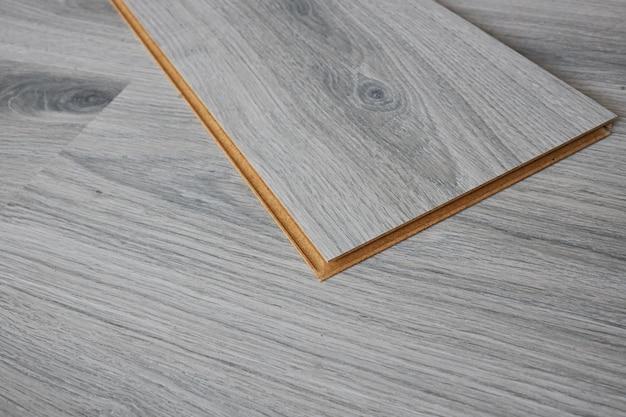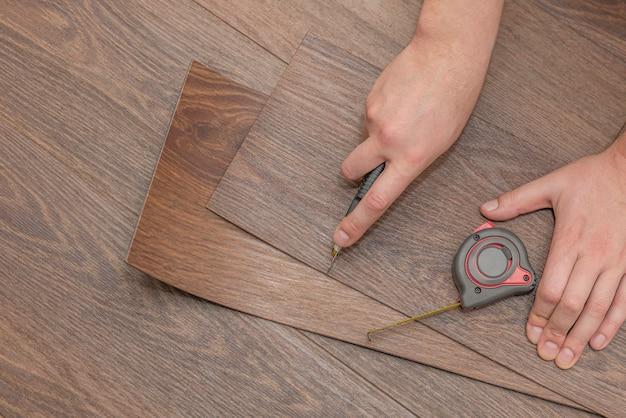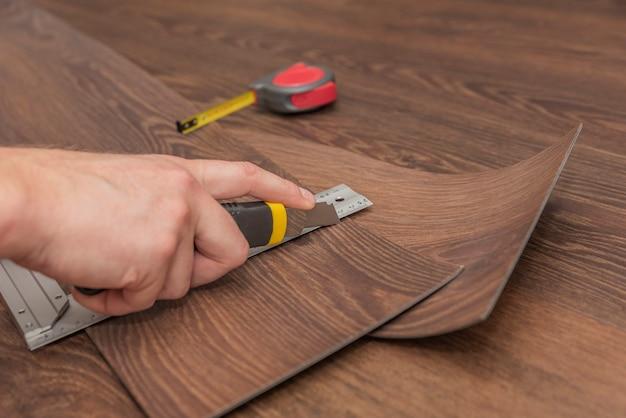Vinyl plank flooring is a popular choice for its durability and easy maintenance. However, accidents happen, and water spills can occur, especially in areas like kitchens or bathrooms. But don’t panic! In this blog post, we will guide you on how to handle the situation if water finds its way beneath your vinyl plank flooring. From drying techniques to preventing mold growth, we’ve got you covered. So keep reading to learn how to tackle this common issue and ensure the longevity of your beautiful vinyl floors.
What to Do If Water Sneaks Its Way Under Your Vinyl Plank Flooring
Is there anything worse than discovering water has invaded your vinyl plank flooring? It’s like finding out someone ate the last slice of pizza, or realizing there’s no coffee left in the morning. But fear not! We’ve got you covered with some handy tips and tricks to tackle this slippery situation. So grab a towel, put on your favorite catchy tune, and let’s dive into it!
Assess the Situation and Act Swiftly
As soon as you notice water under your vinyl plank flooring, it’s essential to assess the extent of the damage. So, take a deep breath, resist the urge to panic, and locate the source of the water intrusion. Is it a small spill or a major flood? Knowing what you’re up against will help guide your next steps.
Dry It Out Like a Pro
Once you’ve determined the water’s origins, it’s time to roll up your sleeves and get that vinyl plank flooring dry again. Grab your trusty mop, some towels, or a wet/dry vacuum cleaner, and start removing the moisture. Remember, patience is key here. Go over the affected area as many times as necessary to ensure it’s bone dry.
Ventilation to the Rescue
Air circulation is your ally in the battle against wet vinyl plank flooring. Open up windows, turn on fans, and let the fresh breeze work its magic. If possible, consider using a dehumidifier to help speed up the drying process. Your floor will thank you for the extra airflow, and you’ll have a lovely, dry space in no time.
Peel and Reveal
Sometimes, even with your best efforts, water can seep beneath the vinyl plank flooring and cause concerns like warping or mold. If this happens, don’t despair! It’s time to channel your inner detective and peel back the affected planks. Remember, you’re embarking on a quest for a dry subfloor.
Treat the Subfloor
Ah, the subfloor, the unsung hero beneath your vinyl planks. Once you’ve uncovered the source of the moisture, treat the subfloor accordingly. If it’s damp or showing signs of mold growth, employ the proper cleaning and disinfecting methods. A mix of hot water, mild dish soap, and a dash of elbow grease should do the trick. Ensure everything is dry and mold-free before reinstalling your vinyl planks.
Prevent Future Accidents
Now that you’ve conquered the water invasion, it’s time for some preventative measures. Consider using waterproof mats or rugs in areas prone to spills, like the kitchen or bathroom. Promptly clean up any liquid messes, and be cautious when moving heavy objects to avoid scratching or puncturing the vinyl surface. Remember, an ounce of prevention is worth a pound of dry flooring!
So, the next time water decides to crash the vinyl plank flooring party, roll up your sleeves, follow these tips, and show that liquid intruder who’s boss. You’ve got this!
How to Dry Up Water Under Vinyl Flooring
Assess the Situation
Before you dive into drying up that unwanted pool under your vinyl flooring, it’s important to take a moment to assess the situation. Is the moisture just a tiny spill caused by a clumsy mishap, or are you dealing with a full-blown indoor swimming pool? Understanding the extent of the issue will help you determine the best course of action.
Mop It Up!
Grab a mop or some absorbent towels and start mopping up that water like a superhero saving the day. Be thorough and ensure you get every last drop. Imagine yourself as a vinyl floor warrior, conquering the enemy of dampness one swipe at a time. Just be sure not to use a steam mop, as excessive heat can warp the vinyl planks.
Time to Get Ventilated
Crack open the windows and let the fresh air flow through your space. Ventilation is key when dealing with moisture, as it helps to evaporate the water more quickly. If you have a fan handy, even better! Set up a breeze that will make that dampness disappear in no time. Plus, the sound of a fan can be surprisingly soothing.
Bring in the Big Guns: Dehumidifiers
This is the chance for your trusty dehumidifier to shine. Position it strategically near the affected area to suck out all the excess moisture from the air. Think of it as a superhero sidekick, coming to your aid in times of water-related emergencies. Just make sure to empty its reservoir regularly to avoid any unintended water damage.
Raise the Flooring’s Temperature
Trick that water into thinking it’s vacation time in the tropics by turning up the heat. Yes, you heard me right. Warmth can help speed up the evaporation process, making the water under your vinyl flooring feel unwelcome and find its way out. Just don’t overdo it and fry your flooring or create a sauna-like atmosphere.
No More Mr. Damp Guy: Air Dry
If the water under your vinyl flooring only gave you a minor scare, you can rely on good old air drying to come to the rescue. Give it time, and let nature take care of things. Open doors, windows, and let the dry air work its magic. Just be patient and avoid walking on the area until it’s completely dry.
Remember, accidents happen, and water sneaks into unexpected places. But armed with these tips, you’ll be ready to tackle the challenge of drying up water under your vinyl flooring like a pro. So, put on your drying cape and show that moisture who’s boss!
Can Mold Grow Under Vinyl Plank Flooring
Vinyl plank flooring offers many benefits, such as durability, water resistance, and easy maintenance. But what if your worst fear comes true and water manages to seep under your vinyl planks? Can mold start throwing a party unnoticed? Let’s take a closer look at this potentially gloomy scenario.
The Soggy Situation
Imagine you had a spill or a leak, and now the floor beneath your vinyl planks is soggier than a leftover cereal bowl. This unfortunate combination of water and darkness might make you wonder if mold is secretly plotting its invasion.
Mold’s Sneaky Nature
Mold is the ultimate ninja, thriving in damp and dark environments. It needs moisture, organic matter, and time to establish its dominion. But vinyl plank flooring, being water-resistant, puts mold at an immediate disadvantage. It’s like trying to swim upstream while holding a cocktail umbrella in a hurricane.
Prevention is Better than Moldy Cure
To prevent mold from even considering setting up shop, act swiftly. Dry the affected area ASAP, ensuring there’s no lingering moisture. If the dampness persists, mold might sense an opportunity and launch its attack.
Sound the Alarm: Signs of Mold
If mold manages to infiltrate your fortress of vinyl planks, it won’t be able to hide forever. Keep an eye out for any strange sights or smells. Mold announces its presence with distinct odors and unsightly discolorations. If you notice any suspicious patches or detect a funky fragrance, it’s time to investigate further.
Evicting the Unwanted Guests
If you do find mold lurking beneath your seemingly impervious vinyl planks, swift and decisive action must be taken. Remove the affected planks, and be prepared to face the consequences of your enemy’s invasion. Once revealed, the mold can be dealt with using various techniques and even professional assistance, if needed.
Stay Dry, Stay Wary
To prevent mold from ever becoming a dinner guest under your vinyl plank flooring, always be vigilant and mindful of potential water sources. Avoid major spills and, if a leak does occur, promptly dry the area and inspect for any signs of mold mischief.
While vinyl plank flooring’s water resistance is its primary defense against mold, it’s not entirely invincible. However, by staying proactive and nipping moisture problems in the bud, you can keep your vinyl planks clean, dry, and free from mold’s unsightly presence. So, fear not, dear homeowner, and exhale that musty breath of relief—you’ve got this!
Will Water Evaporate Under Vinyl Flooring
Vinyl plank flooring is known for its durability and water-resistant properties. But what happens when water manages to seep underneath? Will it magically evaporate and disappear into thin air? Let’s dive into this watery conundrum and find out!
The Great Houdini Act of Water
Imagine water as a mischievous magician, always looking for an opportunity to pull off a disappearing act. When it sneaks under your vinyl flooring, it might seem like an unsolvable mystery. However, fear not, my friend, for there’s an explanation for everything!
The Breathable Flooring Myth Debunked
Contrary to popular belief, vinyl flooring, like a stubborn teenager, isn’t the most breathable material. It doesn’t allow air to pass through easily. So, if the water is hoping for a quick escape, it might have a tough time doing so.
The Waiting Game
Now, you might be thinking, “Should I just sit back and wait for the water to evaporate?” Well, my eager Padawan, evaporation might not be as speedy as you’d hope. Despite vinyl’s water-resistant nature, the process of evaporation might take longer than you expect. It all depends on various factors, such as humidity levels, room temperature, and the amount of water lurking beneath the surface.
Warming Up the Stage
If you’re looking to speed up the evaporation process, providing some assistance might do the trick. Crank up the thermostat a bit to raise the room temperature. Warmth can coax the water molecules into transforming into a gaseous state and making their grand exit.
The Power of Air Circulation
If you want to kick evaporation into high gear, it’s time to let the air do its thing! Open up those windows, turn on some fans, and let the breeze work its magic. Improved air circulation will help speed up the drying process by allowing the moisture to escape.
A Helping Hand
If your vinyl flooring has been housing water for an extended period, it’s best to intervene and prevent any potential damage. Remove the planks or tiles carefully, allowing them to dry individually. Create a conducive environment by using dehumidifiers or blowers to eradicate excess moisture.
Preventive Measures for Future Acts
Now that you’ve witnessed the great water escape, it’s time to take preventive measures. Ensure proper sealing and installation of your vinyl flooring to minimize the chances of water breaching its fortress. Act fast when spills occur, and don’t let liquid hang around for too long. A swift cleanup routine will keep your flooring unscathed.
Bid Farewell to Water Woes
To summarize, while water under vinyl flooring might not disappear in a snap, it can still make its grand exit with a little assistance. Be patient, create the perfect stage for evaporation with warmth and air circulation, and don’t hesitate to lend a helping hand if necessary. With these tips in your repertoire, you can bid farewell to water woes and enjoy a dry and pristine vinyl flooring experience!
Remember, prevention is key, so embrace a proactive approach to keep your vinyl flooring safe from unwanted water intrusions.
What Happens if Water Gets Under Lifeproof Flooring
The Dreaded Water Under Lifeproof
You’re enjoying a relaxing day at home when suddenly disaster strikes – water spills onto your Lifeproof flooring. Panic sets in as you imagine the worst-case scenario: a ruined floor, a hefty repair bill, and the wrath of the flooring gods upon you. But fear not, my friend! Let’s delve into what actually happens if water manages to infiltrate beneath your beloved Lifeproof floors.
A Sneaky Intruder
Water, the sneaky ninja of substances, can worm its way through the tiniest of cracks and crevices. Even the most robust Lifeproof flooring can’t always withstand its crafty antics. So, what does water do when it penetrates under your Lifeproof flooring like an uninvited guest crashing a party?
Swelling and Warping, Oh My!
When water infiltrates beneath your Lifeproof flooring, it can cause swelling and warping. The moisture infiltrates the layers beneath, causing the planks to expand and contort in ways that would put a contortionist to shame. Suddenly, your once pristine floor resembles the rolling hills of a miniature mountain range. But hey, at least it’s a conversation starter, right?
Mold, the Unwanted Houseguest
Water brings along its pesky friend, mold, to the party as well. Mold thrives in damp environments, feasting on the moisture beneath your Lifeproof flooring. Before you know it, you’ll have an unwanted green carpet growing beneath your feet. And let’s face it, unless you were going for an avant-garde jungle look in your living room, it’s not exactly what you had in mind.
It’s Time for Damage Control
If water manages to infiltrate beneath your Lifeproof flooring, don’t despair! There are steps you can take to minimize the damage. First, swiftly remove any standing water using towels or a wet-dry vacuum. Then, ensure thorough drying by using fans or dehumidifiers to evaporate any trapped moisture. Quick action can often prevent further swelling, warping, and mold growth.
Prevention is Key
Of course, the best way to deal with water under Lifeproof flooring is to prevent it from happening in the first place. Be vigilant and avoid spills or leaks by properly maintaining your plumbing, appliances, and keeping an eye out for potential sources of water damage. And remember, a waterproof doormat can be your Lifeproof flooring’s best friend, helping to fend off any unwelcome water intruders.
Stay Dry, Stay Happy
While the thought of water under your Lifeproof flooring may initially send you into a panic, there’s no need to fear. By understanding the potential consequences and taking proactive measures to prevent and address water infiltration, you’ll be well-equipped to keep your Lifeproof flooring safe and dry. So, go forth, my friend, armed with knowledge and a trusty mop, and conquer any water-related challenges that come your way!
What Happens if You Accidentally Drench Your Beloved Vinyl Plank Flooring
So, you’ve found yourself in a bit of a pickle, eh? You were minding your own business, having a grand old time, when suddenly, disaster struck—water spilled all over your precious vinyl plank flooring! Gasp! Fear not, my friend, for I am here to shed some light on this soggy situation. Let’s dive right in (pun intended) and explore what happens when water sneaks its way under that beautiful vinyl.
A Soaking Situation
When water makes its sneaky entrance under your vinyl plank flooring, it can spell trouble. Imagine you’re a little vinyl plank, just happily doing your thing, when suddenly, bam! You’re drenched by the villainous water. Splash! The water might seep into the edges of the planks or find its way through those minuscule gaps. It’s like a secret mission spy movie, but with less action and more moisture.
Water, Water Everywhere
Once the water has infiltrated your plank fortress, it’s time to face the consequences. The boards might start to swell up, resembling a very grumpy and puffy vinyl plank version of Humpty Dumpty. No one wants a swollen plank; it’s just not a good look, my friend. Even worse, you might notice some unsightly discoloration or mold growth if the water sticks around for too long. Yuck!
Protecting Your Precious Planks
Now, let’s get down to business. What can you do when water gatecrashes your vinyl plank party? First things first, you need to act fast. Grab some towels, sponges, or even a good old mop and start drying the floor as if your life depended on it. Well, maybe not your life, but definitely the life of your beloved vinyl planks. Make sure to wipe away any excess water lurking around and pay extra attention to those trouble spots where water likes to hide.
The Escape Plan
Once you’ve triumphantly banished the water from your planks, it’s time to assess the situation and prevent future water intrusions. Inspect the floor for any damage—those swollen or discolored planks might need some extra love. If you spot any mold, it’s best to act fast and consult a professional to tackle the situation. Now, it’s time to tighten the security around your vinyl plank fortress. Consider using mats or rugs in water-prone areas to provide an extra layer of protection. Who said functionality couldn’t be fashionable?
Prevention Is Key
Of course, the best way to deal with water under vinyl plank flooring is by preventing it in the first place. Be vigilant and ensure that your floors remain dry at all times. Avoid mopping with excessive water and clean up spills immediately—no dilly-dallying! And remember, accidents happen, so consider waterproofing your subfloor before installing vinyl planks. Your planks will thank you for it!
In Summary
Now that you’re armed with the knowledge of what happens when water invades your vinyl plank flooring, you can tackle any watery mishaps with confidence. Dry your planks, assess the damage, and take steps to prevent any future water intrusions. Your vinyl planks will remain happy, dry, and fabulous for years to come.



